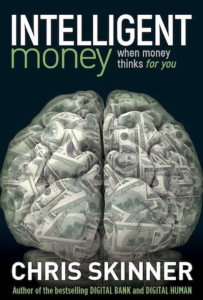 Legendary actor and singer David Hasselhoff – AKA ‘The Hoff’ – has joined the world’s leading video game studios in supporting not-for-profit PlanetPlay’s ever-growing Make Green Tuesday Moves (MGTM) initiative.
Legendary actor and singer David Hasselhoff – AKA ‘The Hoff’ – has joined the world’s leading video game studios in supporting not-for-profit PlanetPlay’s ever-growing Make Green Tuesday Moves (MGTM) initiative.
This enables players to make a real-world impact in the fight against climate change. which enables players to make a real-world impact in the fight against climate change.
Starting today, Tuesday July 2nd 2024, each participating game is launching specially created green items featuring The Hoff, which will be exclusive to the MGTM movement and remain live until the next monthly activation begins
Proceeds from the sale of The Hoff’s content – which can comprise new and/or upcycled DLC goods such as characters, skins and items – will be invested into fully certified sustainability projects by PlanetPlay’s eco-donate platform.
Watch these exclusive video messages from The Hoff, explaining how MGTM works and why he’s backing the initiative: Video #1 | Video #2 | Video #3
The Hoff, star of global smash hit TV series’ Knight Rider and Baywatch, is proud to be MGTM’s first ‘Star of the Month’ from the world of entertainment, supported by a huge social media campaign, helping to inspire gamers all around the world to ‘Make Green Tuesday Moves’.
Among the games featuring The Hoff’s green DLC as part of July’s MGTM are Avakin Life (Lockwood Publishing), Bowling Club (Boombit), Car Driving School (Boombit), Cook & Merge (Supersolid), Crazy Defence Heroes (Animoca Brands), Darts Club (Boombit), Dawn Of Ages (Boombit), Fishing Clash (Ten Square Games), Hunt Royale (Boombit), Nitro Nation (CM Games), Peridot (Niantic), Piper Pets Cafe (Tripledot), Solitaire (Tripledot), Subway Surfers (SYBO), The Great Ocean (Actrio), Tile Dynasty (Tripledot), Top Drives (Hutch), Train Station 2 (Pixel Federation), Triple Title (Tripledot) and Wooduku (Tripledot).
For a full list of MGTM games & partners click here.
Google is also supporting the innovative MGTM movement with a dedicated page on the GooglePlay app store, featuring an overview of the mission, a showcase of The Hoff’s videos, and all participating games from July 2-15 across all English-speaking territories.
These games collectively have over 36 million daily players1, with games that have been played over 4 billion times2.
All gamers need to do to get involved in MGTM is harness their #PassiveActivism, by continuing to play the games they love to contribute to amazing sustainability causes – all supported by The Hoff!
These sustainability causes include the Hongera Project, which helps families in Kenya improve their living conditions by manufacturing and distributing clean cookstoves, and the WAI Wanaka water conservation project in New Zealand.
For more information about PlanetPlay and Make Green Tuesday Moves, click here.
The Hof said: “As someone who has spent years entertaining audiences around the world, I know the power of influence. Climate change isn’t just a distant threat; it’s here and now. By joining the Make Green Tuesday Moves initiative, we can turn our everyday gaming into a force for good. Let’s make every play for our planet. Together, we can create a legacy of sustainability for future generations. Stay cool, stay green, and make a difference!”
Jessica Jung, Product Manager for Peridot at Niantic, said: “We’re excited to partner with PlanetPlay for initiatives like Make Green Tuesday Moves. At the core of Niantic’s mission, we believe that we can leverage the power of gaming to help people get outdoors, healthier, and meet new people. It’s amazing when this mission can also work in tandem to make for a greener planet.”
Tamzin Taylor, Head of Google Play Partnerships, Western Europe, said: “PlanetPlay’s Make Green Tuesday Moves initiative is a fantastic example of how the games industry can leverage its massive reach to make a positive impact. We’re proud to support MGTM by featuring it on the Google Play store, making it easier for millions of gamers to get involved and play for the planet.”
Rhea Loucas, CEO at PlanetPlay, said: “The Make Green Tuesday Moves initiative embodies the incredible potential of the games community to drive meaningful change. With David Hasselhoff as our first ‘Star of the Month,’ we want to inspire millions of players to join our mission to help keep global warming below the 1.5 degree threshold. I also want to welcome all our new studio partners, who are integrating sustainability into their game experiences to empower players to contribute to real-world environmental solutions. We are thrilled to have The Hoff on board and can’t wait to see the impact this collaboration will achieve.”
About PlanetPlay
PlanetPlay, the first climate conscious games marketplace, is a not-for-profit digital platform that allows everyone around the world to contribute to climate action through in-game purchases and gameplay with affiliated game studios. PlanetPlay is a unique platform through which to inspire, educate and mobilize players in support of the planet. The games industry has enormous potential to support positive climate action globally. Having driven over $2.2 million in climate project funding in its first year, PlanetPlay is partnering with the world’s forward thinking games studios to fight the climate crisis and are constantly developing new initiatives to launch. For more information, visit www.planetplay.com



